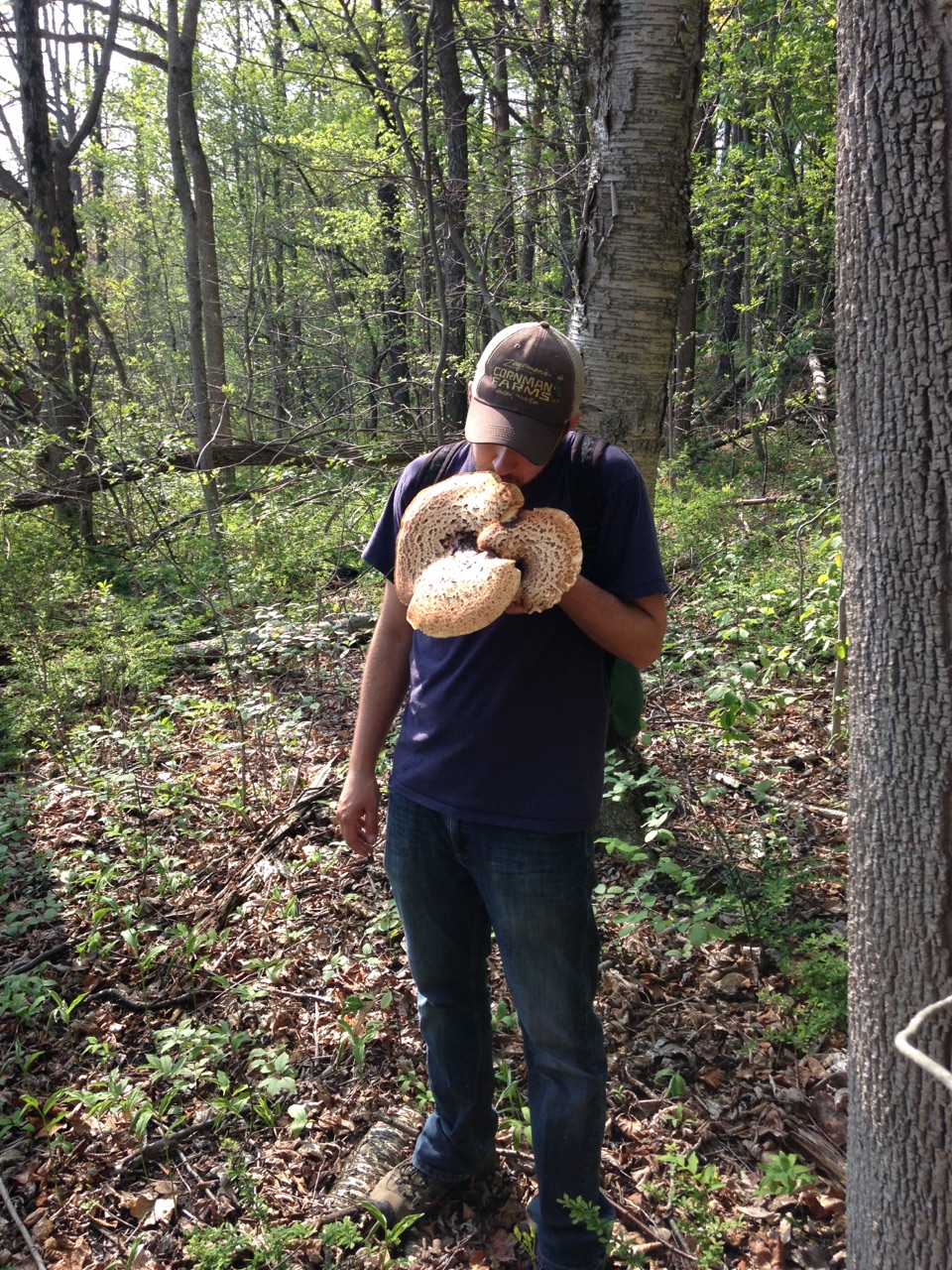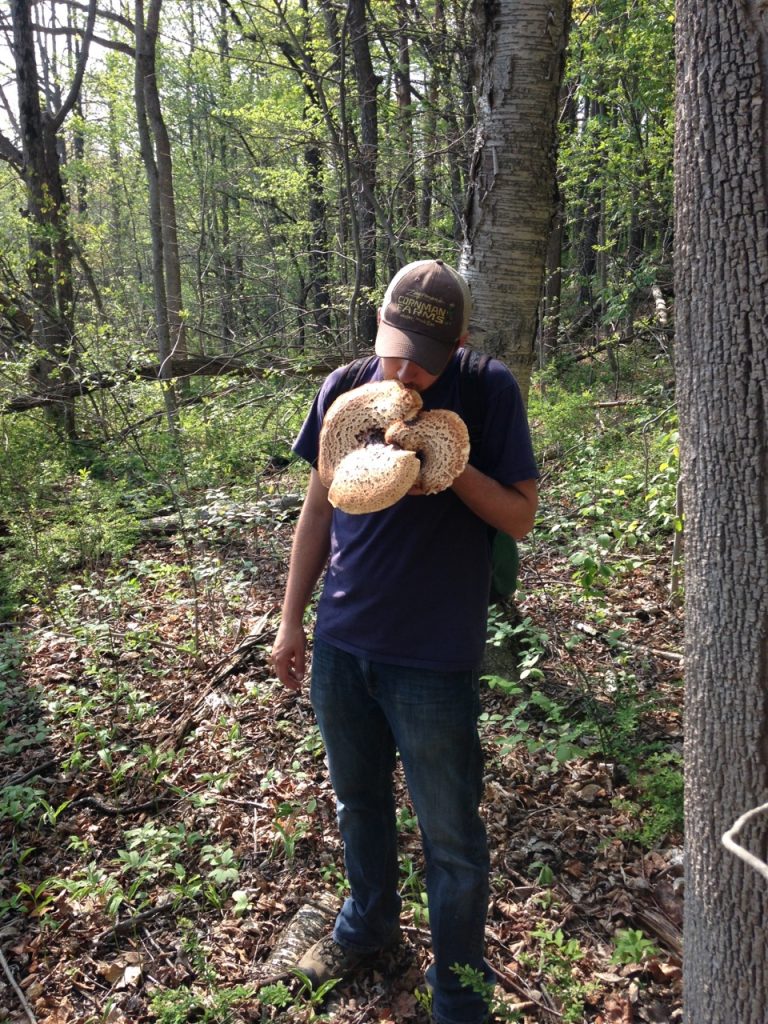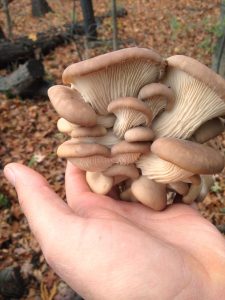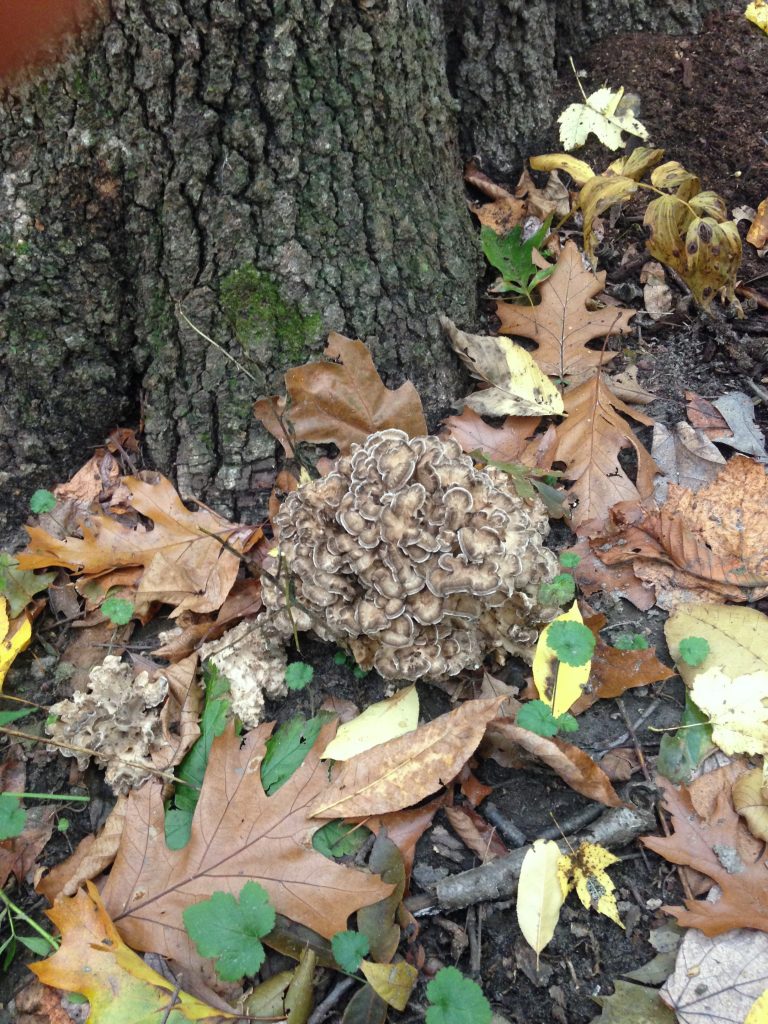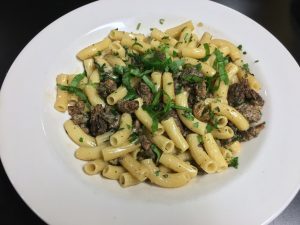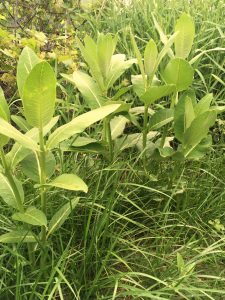Woodsman Joe Schlenke explains the fun in fungi.
By Marcy Harris
There is nothing quite like experiencing freshly sourced, local ingredients, and Zingerman’s Roadhouse loves to put them on your plate. Our very own Joe Schlenke does, too, in the form of local mushrooms.
Joe has been working in Zingerman’s Roadshow since 2013, and he’s been a forager much longer than that. His expertise is our gain, since he brings in the majority of the Roadhouse’s mushrooms and local ramps. Ever wonder where our earthy morels and meaty chicken-of-the-woods come from? We owe the beautiful flavors of these forest treasures to the bounty that Joe brings in.
While Joe loves the teamwork and the energy of hopping cars at the Roadshow, he is happiest on a solitary jaunt through the woods. Joe comes from a family who spends much of their time outdoors doing things like hunting and fishing, so it is in his blood.
“It is a way to calm my brain after a stressful day. I can go out to the woods, and it’s the leaves rustling, and the birds singing, and the smells, and the warm sun. If you ever have a bad day, I am 100% convinced that a walk in the woods will cure anything.”
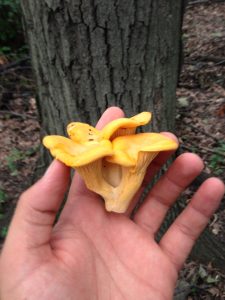
A beautiful chanterelle can be easy to identify because of its color. Photo courtesy of Joe Schlenke.
“The key is to look at the environment. Find the tree first, find the right soil, then find the mushroom.”
It all began about 8 years ago with a walk in the woods looking for morels. That first year wasn’t fruitful, as Joe only found a couple of mushrooms. But as each year passed and he learned more and more about mushrooms, Joe found he was bringing in bagfuls of them. It was in his third year that he learned about the foolproof four, so called because they are widespread and very easy to identify: morels, puffballs, chicken-of-the-woods, and chanterelles.
His fourth year out, in 2013, Joe set out in the beginning of July to seek out chanterelles. These are easy to identify because they grow by beech trees and are so golden in color they are like a beacon guiding a ship home. It was simple. Joe found a beech tree, picked a big yellow mushroom that he identified as a chanterelle, and hasn’t looked back since. The experience of learning about something and then finding it that very afternoon was all he needed to keep up the hunt.
It really does taste like chicken!
So July will bring us chanterelles and oyster mushrooms. In August, there are a couple of species Joe gets really excited about. The first is chicken-of-the-woods, and as its name implies, it is almost indistinguishable from chicken meat. No joke, I’ve known at least one vegetarian who was convinced they were eating chicken when enjoying this delicious mushroom.
Another favorite is the lobster mushroom, which turns a brilliant shellfish red on the outside while the inside stays a tender white color. Shrimp-of-the-woods do indeed look like shrimp, half curled with a pinkish tinge. Both of these mushrooms boast incredible seafood flavors. Joe likes to batter the shrimp-of-the-woods and fry them up like popcorn shrimp. As we progress into the fall, there are lion’s mane, which taste like crab. Who needs to go fishing when you can forage in your local woods?
Hen-of-the-woods are abundant in the fall as well, until the snow comes. They are also known as maitake, and are full of umami flavor. These are massive, and according to Joe “finding a 25-pound fungus that tastes that delicious, you feel rich, like a king.” Mushrooms are a significant source of protein, and maitake is a savory meat substitute in many dishes. Joe describes how he loves making “meatballs” out of them that are killer with fresh herbs and a house made marinara sauce. I’m drooling.
Joe’s face lights up while he talks about these beauties and how they are not only incredibly flavorful, but have beneficial properties. Mushrooms are full of vitamins, like riboflavin and vitamin D, and some species, like maitake, are excellent anti-inflammatories.
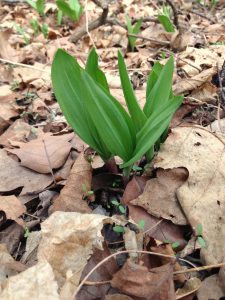
Ramps are abundant in Michigan, and add incredible green onion flavor to any dish. Photo courtesy of Joe Schlenke
Ramping up for a new season of plants.
Joe’s next big focus is on plants. He will learn about 2-3 every year and add them to his search. He brings ramps to the Roadhouse in the spring, a wild local green leek that pairs well with the morels we get from him, too. Joe is a big fan of the Morel and Ramp Mac and Cheese we make in the spring with his harvest.
He keeps an eye out for spicebush, which tastes like cinnamon, nutmeg, clove, and lemon. Apparently, it looks like any other unremarkable shrub, but then you give it a rub and smell it, and you are inclined to wonder why we aren’t making cookies, bread and delicious drinks out of it. Joe claims that people used to, but they don’t anymore.
Milkweed is a fun plant that is also versatile. The shoots taste like yummy asparagus, and the unripened seed pods can be cooked. The fuzzy parts of the pods take on a consistency similar to a stretchy mozzarella cheese. Joe loves to cut them up and curry them. The plant can also be used for fiber.
Who needs calamine lotion?
Joe also stays on the lookout for plants with medicinal purposes. Jewelweed and burdock are plants he will grab a bunch of when he’s in the woods. The second you get a mosquito bite, you can rub jewelweed on the bite and it will go away. In addition, it’s really good for rashes from stinging nettles and poison ivy.
Knowing about these plants is important to Joe while he’s in the woods: “If I’m out here and I get into trouble, I need to know what I can use to get me out of trouble.” As a general rule of thumb, if you see a poisonous plant out there, its antidote generally grows nearby!
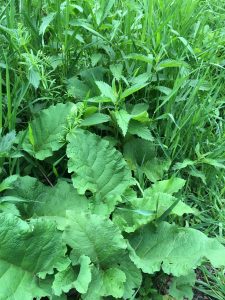
This big leaf plant is burdock, and can be used for stinging nettle rashes. It grows right by stinging nettles, which is handy. Photo courtesy of Joe Schlenke.
Words to live by.
Although foraging can indeed be exciting, Joe does caution people who want to try it on their own, as there are indeed many mushrooms and plants out there that are deadly or can make someone very sick. It is extremely important to go with someone who is experienced and to follow the adages of mushroom picking: “When in doubt, throw it out”, and “There are old mushroom hunters, and there are bold mushroom hunters, but there are no old bold mushroom hunters.”
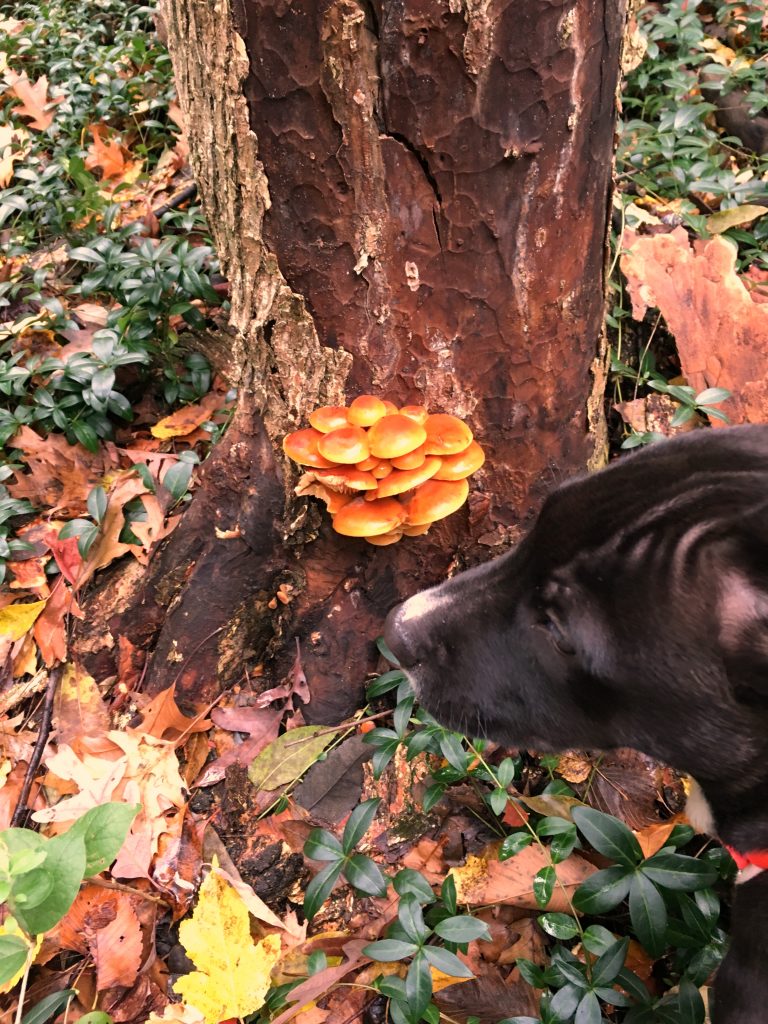
Joe and his dog, Murray, find a perfect enoki specimen. But they won’t eat it until it is properly identified! Photo courtesy of Joe Schlenke.
He also offers the advice to start small, to try and learn a couple things every year. He suggests looking for morels your first year, they are the first to happen after the snow. Then try hen-of-the-woods in the fall. They are super easy to identify because they are big, and therefore the reward is high. From there you can grow by learning something new every time you go out and every year that you go out.
“It’s so important to have these discoveries – it keeps it fresh. The love is always there, because right around the corner, there is always something exciting. The pot at the end of the rainbow is always there, you just gotta find it, and it’s always something more exciting than what you are doing. What you are doing is already exciting, so there’s a constant energy when you go out there.”


